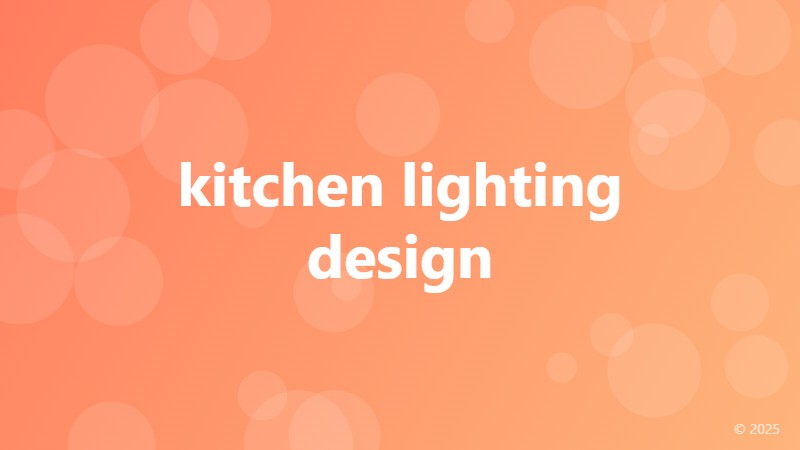kitchen lighting design

Why Kitchen Lighting Design Matters
Kitchen lighting design is often overlooked, but it's a crucial element in creating a functional and aesthetically pleasing cooking space. A well-designed kitchen lighting plan can make a huge difference in the ambiance, safety, and overall usability of the room. In this article, we'll explore the importance of kitchen lighting design and provide some expert tips to help you get it right.
Types of Kitchen Lighting
There are three main types of kitchen lighting: ambient, task, and accent lighting. Ambient lighting provides overall illumination, task lighting focuses on specific areas such as countertops and sinks, and accent lighting highlights decorative features like kitchen islands or display cabinets. A good kitchen lighting design should strike a balance between these three types to create a harmonious and functional space.
Key Considerations for Kitchen Lighting Design
When designing your kitchen lighting plan, there are several key factors to consider. Firstly, think about the layout of your kitchen and the type of lighting that will work best in each area. For example, under-cabinet lighting is ideal for task lighting, while pendant lights or chandeliers can provide ambient lighting. Secondly, consider the color temperature and brightness of your lighting, as this can greatly impact the ambiance and functionality of your kitchen.
Designing for Different Kitchen Styles
Whether you have a modern, traditional, or rustic kitchen, your lighting design should complement the overall aesthetic. For modern kitchens, sleek and minimalist lighting fixtures like recessed lights or LED strips can create a clean and contemporary look. For traditional kitchens, ornate chandeliers or pendant lights can add a touch of elegance. Meanwhile, rustic kitchens can benefit from warm and cozy lighting like pendant lights made from natural materials.
Energy Efficiency and Sustainability
In today's eco-conscious world, energy efficiency and sustainability are top priorities. When it comes to kitchen lighting design, look for fixtures that use energy-efficient LED bulbs or consider installing smart lighting systems that can be controlled remotely. Not only will this reduce your energy consumption, but it can also help reduce your carbon footprint.
Conclusion
A well-designed kitchen lighting plan can elevate your cooking space from functional to fantastic. By understanding the different types of kitchen lighting, considering key design factors, and choosing fixtures that complement your kitchen style, you can create a space that's both beautiful and functional. Remember to prioritize energy efficiency and sustainability to create a kitchen that's not only stunning but also environmentally friendly.